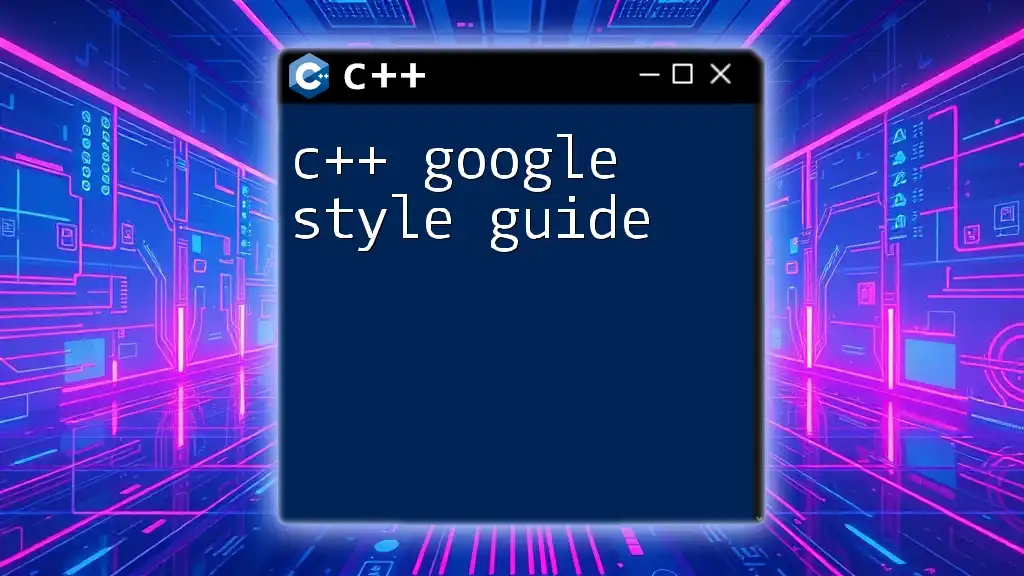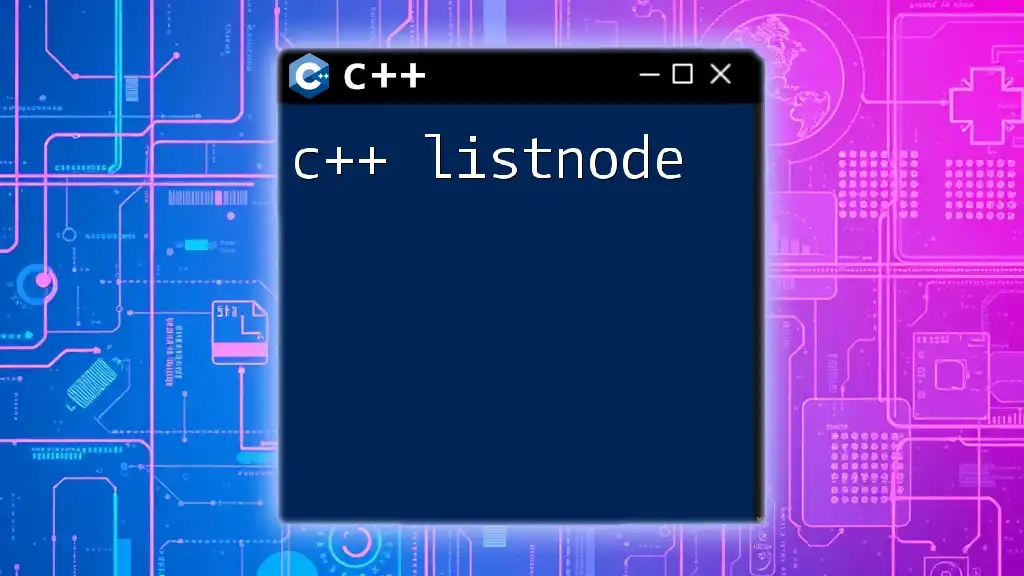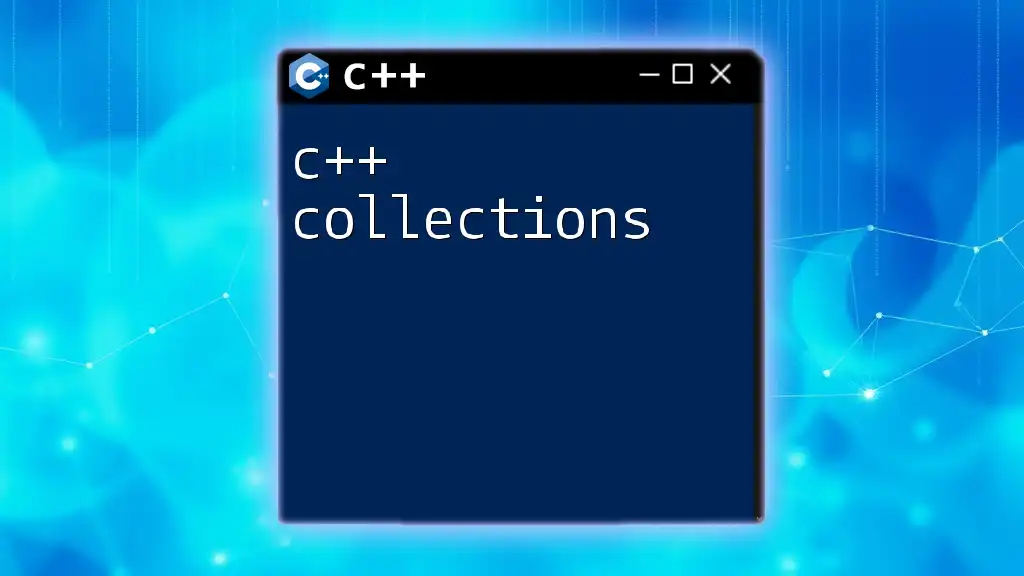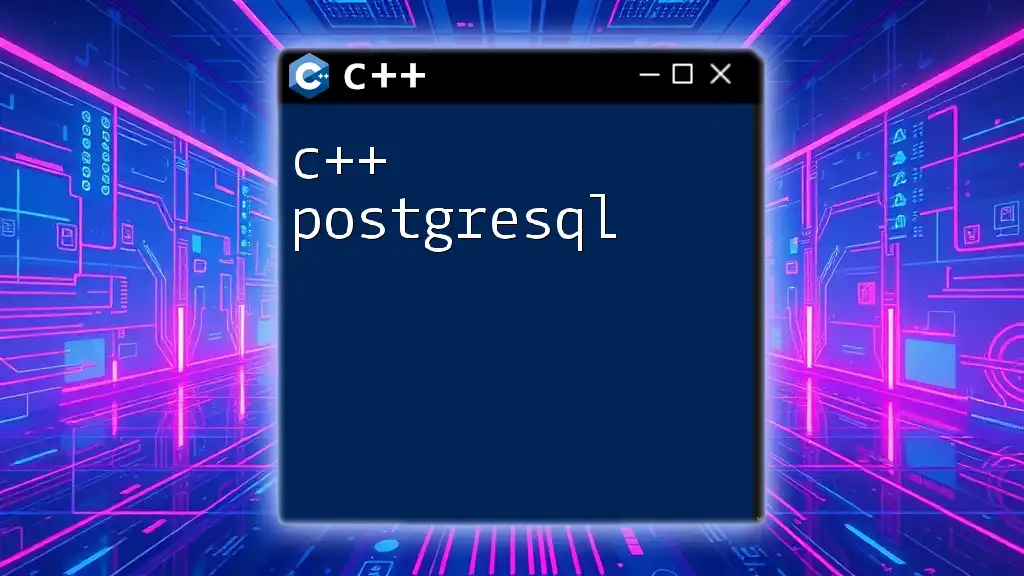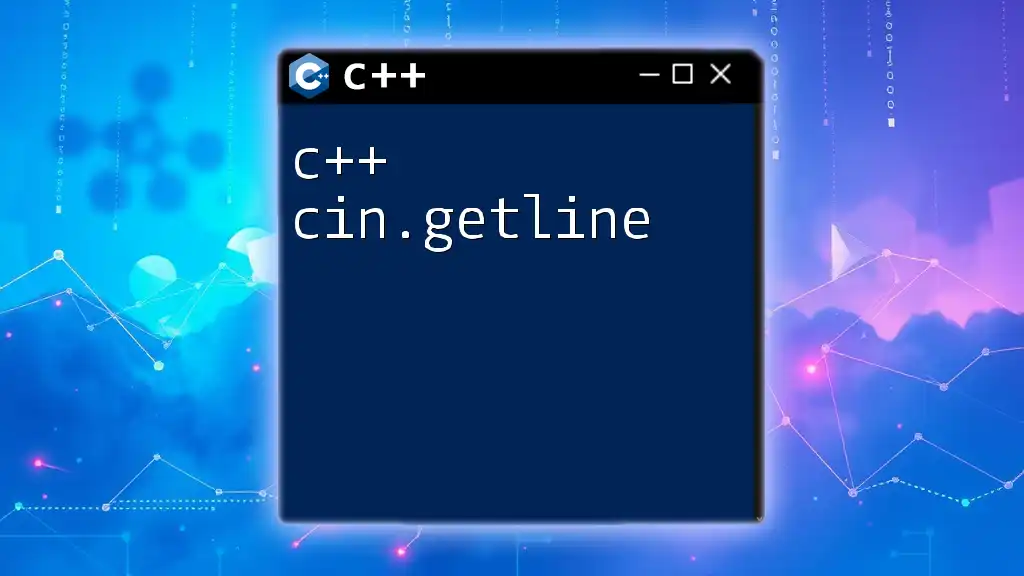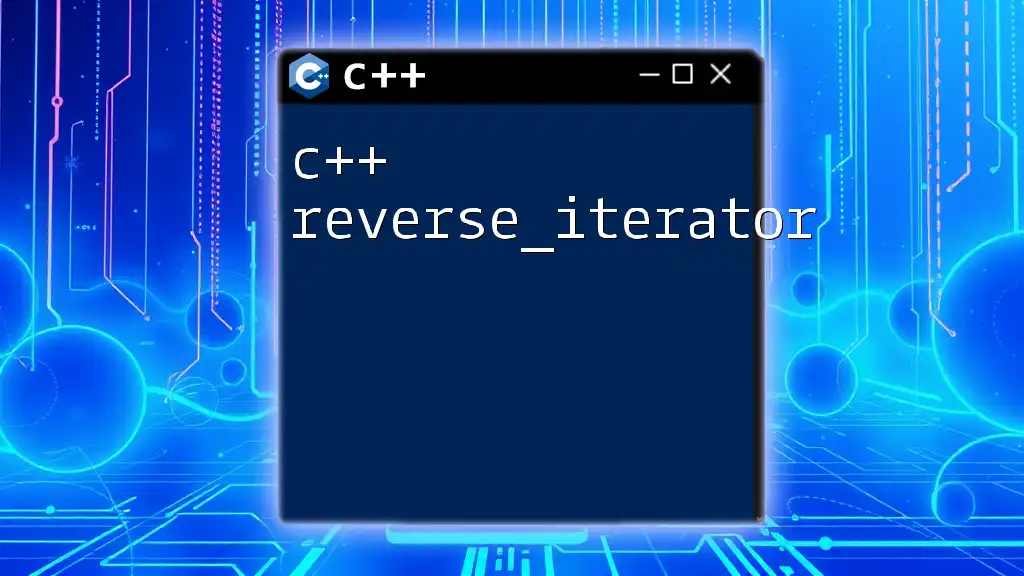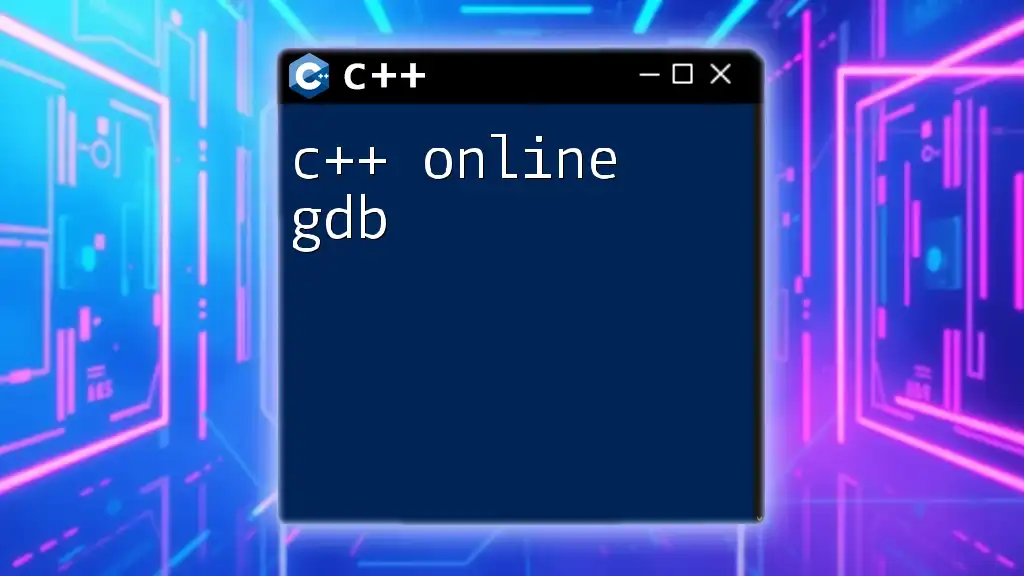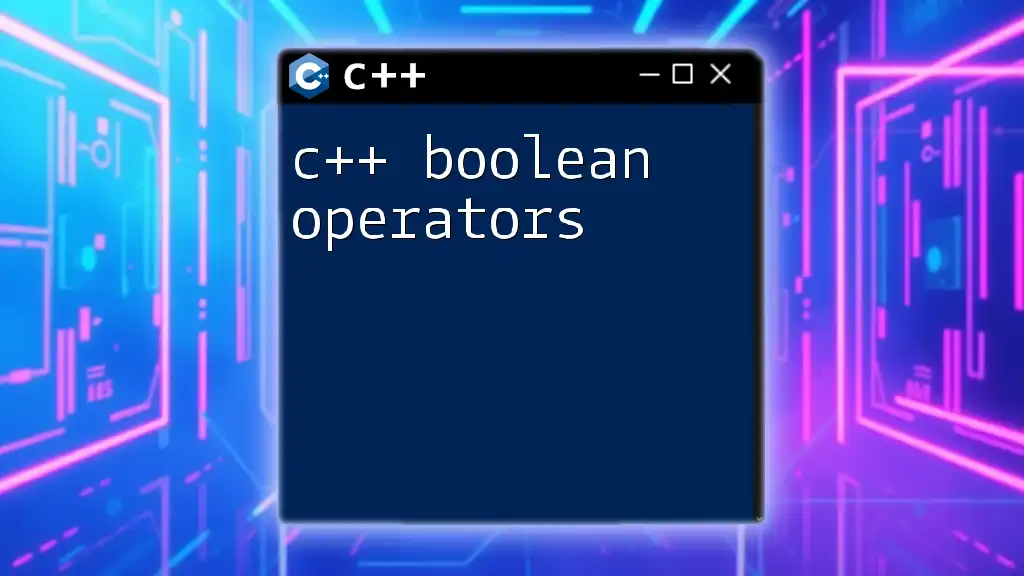The C++ Google Style Guide provides best practices for writing clean, consistent, and maintainable C++ code.
#include <iostream>
int main() {
std::cout << "Hello, World!" << std::endl;
return 0;
}
Understanding the Google Style Guide
What is the Google C++ Style Guide?
The Google C++ Style Guide is a set of guidelines for writing C++ code that emphasizes consistency, readability, and maintainability. It has evolved over the years to reflect the best practices of experienced developers at Google and the greater C++ community. The main goals of this style guide are to establish conventions that help developers produce high-quality software that is easy to read and understand.
Why Follow the Google Style Guide?
Adhering to the Google C++ Style Guide offers numerous benefits:
- Consistency in code: A uniform code style helps new developers quickly understand existing codebases.
- Improved readability: Code that follows a specific style is easier to read, facilitating collaboration and reducing misunderstandings.
- Collaboration among developers: Coding standards ensure that teams can work together seamlessly, not just within their own projects but across multiple Google projects as well.
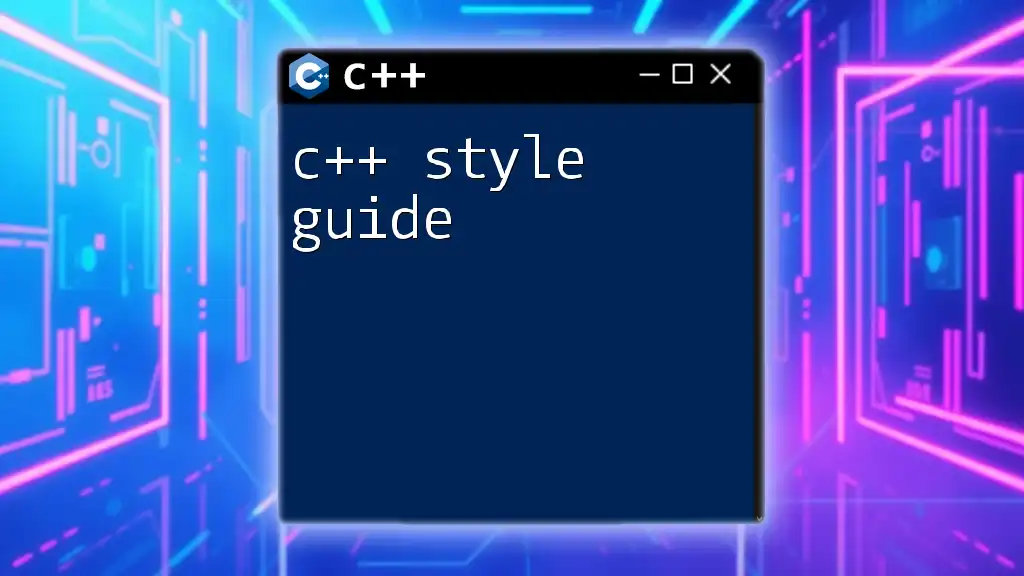
Getting Started with the Google Style Guide
Setting Up Your Development Environment
Before diving into implementation, it’s essential to set up your development environment. Recommended tools include modern IDEs like Visual Studio, CLion, and Eclipse CDT. Additionally, using tools like clang-format can help automate code formatting according to the style guide. Configuration of clang-format can be done easily through the command line or directly integrated into your IDE.
Code Structure and Organization
File Naming Conventions
The guide emphasizes clear and descriptive naming conventions for files. Typically, header files should end with a `.h` or `.hpp` extension, while source files should use `.cc` or `.cpp`. This helps to quickly identify what type of file you are dealing with just by looking at the filename.
Folder Structure
Organizing files and directories appropriately is crucial for larger projects. A well-structured project might separate components into folders like `/src`, `/include`, and `/tests`. This structure enhances navigability and clarity for developers joining the project.
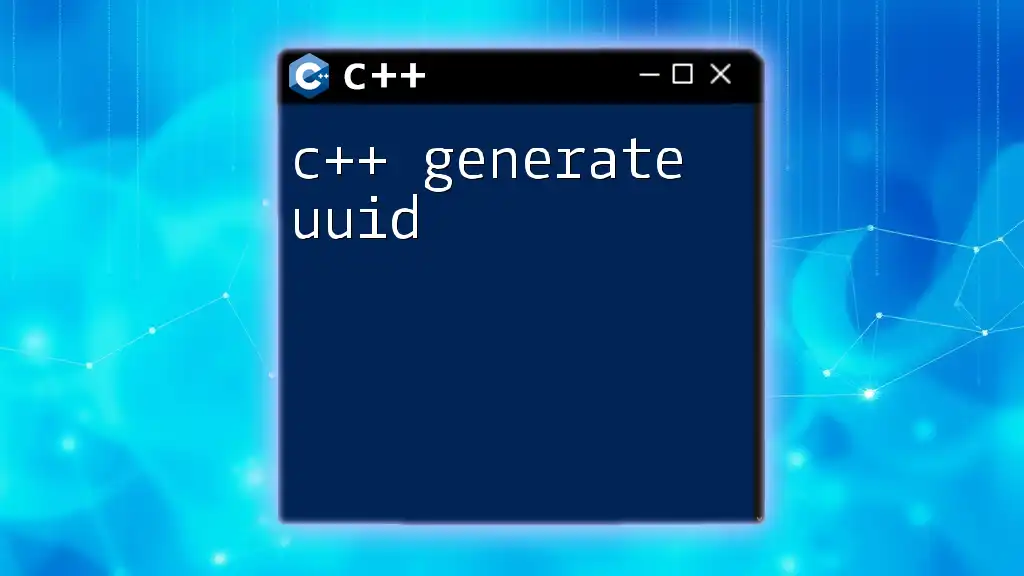
Code Formatting
Basic Formatting Rules
Maintaining a clean and consistent format is vital. Google’s style guide specifies:
- Indentation: Use two spaces for indentation, avoiding tabs.
- Line Length: Aim for a maximum line length of 80 characters to enhance readability.
Comments and Documentation
Writing Effective Comments
Comments should explain why something is done rather than what is being done, as the code itself should be self-explanatory when written well. For example:
// Avoid using magic numbers like 42 without context.
const int max_attempts = 3; // Maximum number of attempts for user login.
Documenting Code
Using tools like Doxygen helps generate documentation from comments in the codebase efficiently. Effective documentation should clarify the purpose and usage of functions, classes, and parameters.
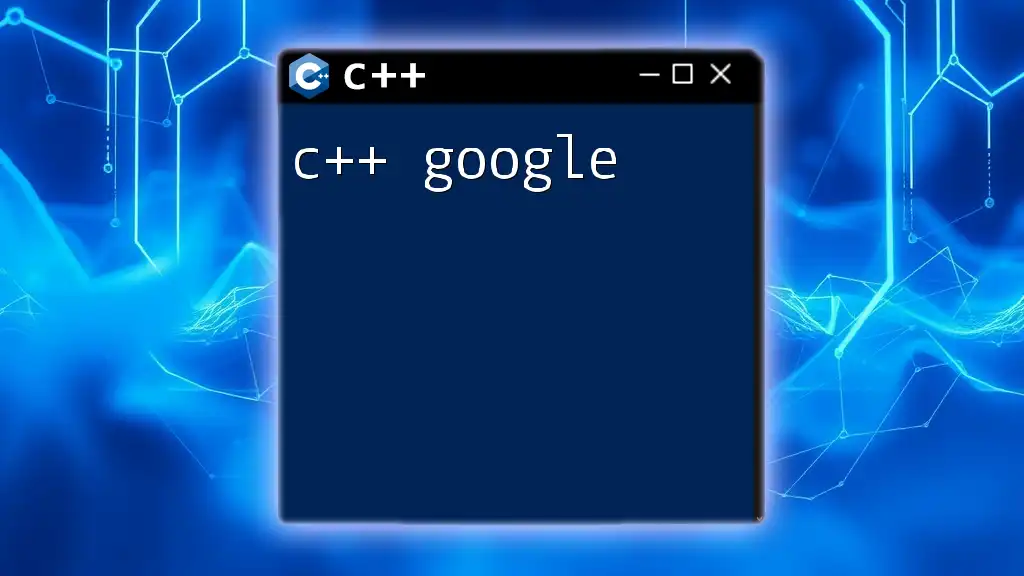
Naming Conventions
Identifiers
Variable and Function Names
The guide recommends using camelCase for variable names and functions, making identifiers readable. For example:
void calculateTotalPrice();
double itemPrice;
Class, Struct, and Enum Names
Use PascalCase for class and struct names. This distinction helps developers quickly identify data structures. Enums should also follow this convention.
class ShoppingCart {};
enum class OrderStatus { Pending, Shipped, Delivered };
Constant and Macro Names
Constants should be named using ALL_CAPS, with underscores separating words:
const int MAX_CONNECTIONS = 100;
Macros also follow the same format, but care should be taken to limit their use due to potential issues with scoping and debugging.
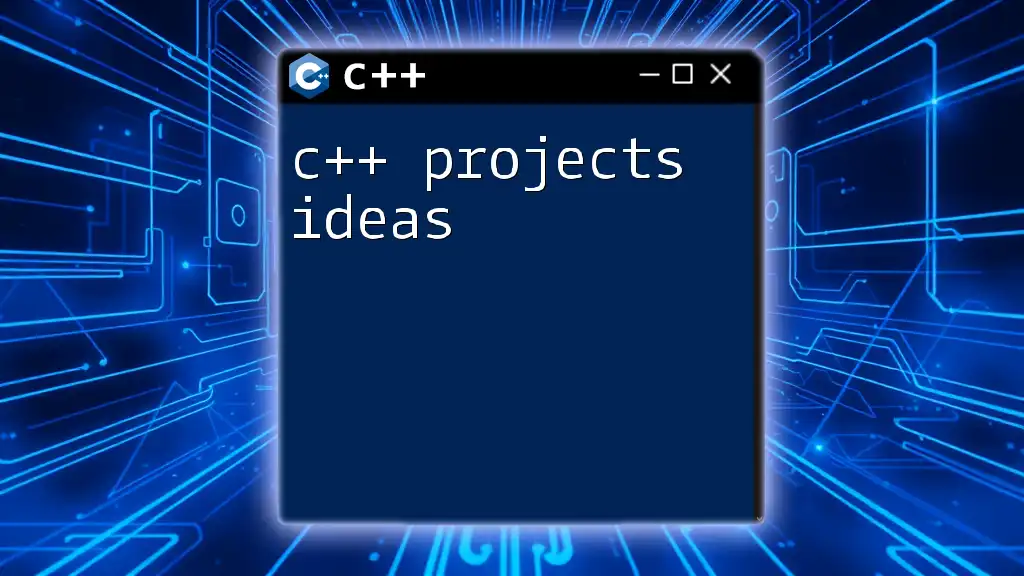
Code Implementation Guidelines
Using `const` and `constexpr`
The guide strongly encourages the use of `const` to define constant variables and `constexpr` for compile-time constants. This practice helps prevent unintended modifications and improves performance by allowing optimizations.
const int maxUsers = 100;
constexpr double pi = 3.14159;
Memory Management
Smart Pointers vs. Raw Pointers
Google favors the use of smart pointers (`std::unique_ptr` and `std::shared_ptr`) over raw pointers wherever possible, as they automatically manage memory, reducing the likelihood of leaks.
std::unique_ptr<MyClass> obj1 = std::make_unique<MyClass>();
std::shared_ptr<MyClass> obj2 = std::make_shared<MyClass>();
Error Handling
Using exceptions for error handling is heavily recommended. Ensuring exception safety and clarity in error propagation leads to more robust code. Always document potential exceptions thrown by your functions.

Conclusion
Following the C++ Google Style Guide is essential for maintaining high-quality, readable, and maintainable code. By adopting these guidelines, you encourage better practices within development teams, fostering a culture of excellence and collaboration.

Additional Resources
To dive deeper into the C++ Google Style Guide, refer to the official [Google C++ Style Guide](https://google.github.io/styleguide/cppguide.html). Explore available tools for formatting your code and join community forums and groups to continually learn and evolve your coding standards.

